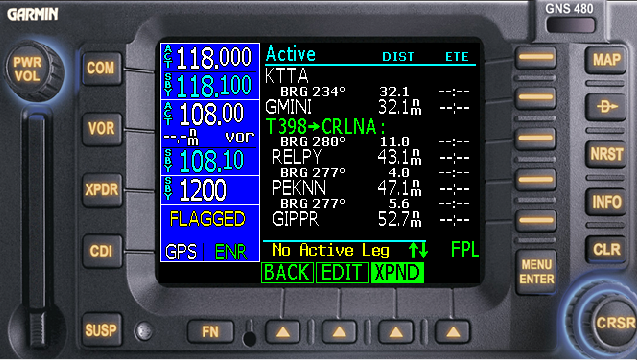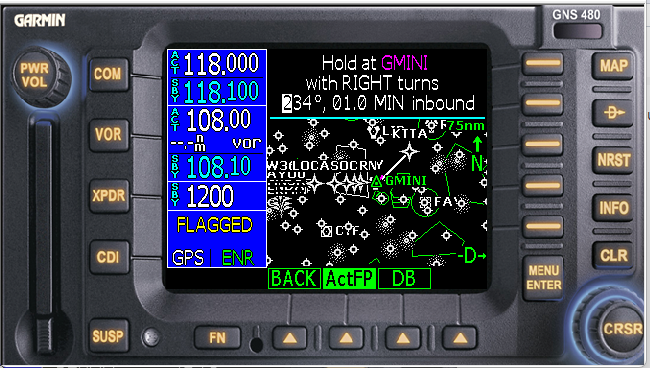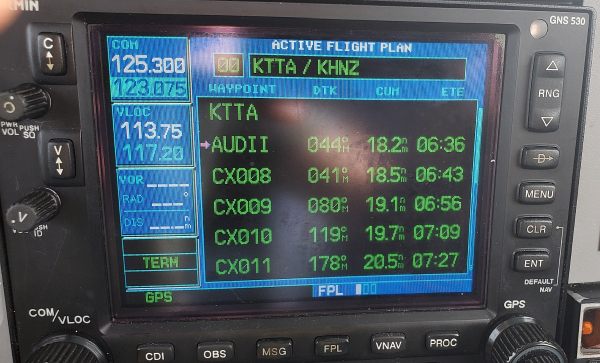-
Posts
4,259 -
Joined
-
Last visited
-
Days Won
17
Content Type
Profiles
Forums
Blogs
Gallery
Downloads
Events
Store
Everything posted by midlifeflyer
-

FAA trying to clear things up for MOSAIC
midlifeflyer replied to Yetti's topic in Miscellaneous Aviation Talk
I don’t think it’s about issues with the rules ans much as issues with the way pilot are reading and understanding the rules. Among the things I’ve heard myself and have had told to me by ASIs I know are: No, you can’t fly a 172 because it needs to be certified as light sport. As a light sport mechanic, I can work in a 172 now. A good part of the confusion has been due to the regulatory decoupling of light-sport category aircraft from sport pilot privileges and limitations. Some have been confused enough that one group has asked me to do a MOSAIC presentation. There is also some additional rulemaking coming along (saw one this morning) but that’s for relatively minor things such as conforming the sport pilot testing standards, which currently talks in terms of “light-sport” aircraft. -

Landing Clearance Reminder Technique
midlifeflyer replied to Lax291's topic in Miscellaneous Aviation Talk
There are risks associated with being wrong, but there are several scenarios where doing what is reasonably expected in the situation is the answer, even if technically against the rules. -

Landing Clearance Reminder Technique
midlifeflyer replied to Lax291's topic in Miscellaneous Aviation Talk
There are a variety of these techniques. If you feel you need one and this works for you, do it. I can’t see a downside to a reminder, although you might consider it part of a short final sequence confirming both cleared to and ready (gear, prop, etc) to land. -

Making sense of NTSB report for M20F N9339M
midlifeflyer replied to DXB's topic in Mooney Safety & Accident Discussion
I don’t disagree at all. But what I’ve been reading suggests some are seeing a requirement to use full flaps for landing just because the published data is based on it. -

Making sense of NTSB report for M20F N9339M
midlifeflyer replied to DXB's topic in Mooney Safety & Accident Discussion
I’m not sure I understand the full vs partial flaps discussion. There may be some light singles that publish landing distance data for various flap settings but I don’t recall if I’ve seen any except for full flaps. That kind of makes sense to me. If available runway is critical, that’s the information you need. But I’ve never taken it as a limitation requiring full flaps for landing or a caution against landing with partial or no flaps. -

Making sense of NTSB report for M20F N9339M
midlifeflyer replied to DXB's topic in Mooney Safety & Accident Discussion
I try to emphasize this every time I include stall recoveries in a training session.Sometimes I’ll include delaying power to make the point. -

Making sense of NTSB report for M20F N9339M
midlifeflyer replied to DXB's topic in Mooney Safety & Accident Discussion
I think if there were indications of a spin, the report would say so. In the absence of anything else, the pilot's description sounds like an overreaction to o the stall warning. Perhaps way too much power applied, which could lead to a nose-up left turn trim stall type event. We don't practice stall recovery enough. I've seen even CFIs who do an extreme maneuver to recover when about a 1" change in pitch would suffice. -

Avionics Upgrade Completed – M20J 1980
midlifeflyer replied to unicom's topic in Avionics/Panel Discussion
There are several people out there who still have one. It was way ahead of it's time. Current databases are available and it includes not only Victor airways, but modern T-Routes. And it even did custom holds years before Garmin put it in anything else. Even early G1000 panels didn't do those. One perhaps interesting observation. I'm sure it's not a representative sample, but those I know who owned and loved the CNX80/GNS480 went Avidyne when they upgraded. Said the logic was more similar. I can't vouch for that - although I flew an airplane with a 480, it wasn't long or often enough to get to an acceptable level of proficiency with it. -

Avionics Upgrade Completed – M20J 1980
midlifeflyer replied to unicom's topic in Avionics/Panel Discussion
Nice panel, @unicom -

Avionics Upgrade Completed – M20J 1980
midlifeflyer replied to unicom's topic in Avionics/Panel Discussion
That's amazing since the 430W/530W doesn't have the ability to select ATC routes, create custom holds, or allow the entry of altitude constraints required for enroute VNAV. Whether one finds any of those valuable enough to upgrade is a separate question. The only one you can sorta do is ATC routes, but that's done in ForeFlight or Garmin Pilot and pushed to the GNS as a series of waypoints. I guess you can do that for custom holds too, but it looks really silly and you have to remember to scroll back up to the fix and tap D→ if you need to go around multiple times. -
Right. It’s not really “overriding.” The glideslope was above you in VS mode and it remained above you because you told it to descend. You never told the AP to level off. Or reduce the descent rate. How could it capture?
-

Capturing Glideslope w/KFC 225
midlifeflyer replied to CaptainBen's topic in Avionics/Panel Discussion
Is there a reason you seem to assume vectors to final? But that's kind of why I asked for more detail - the approach involved and what happened. Other than that, yes, if you manually switch CDI source from GPS to VLOC while in NAV mode, the AP will revert to ROL. But that's not the case with VTF. If you are in HDG mode and switch the source, it remains in HDG mode and does not revert to ROL. I'd be in APR as soon as I heard "cleared for the approach," and not delay until intercept. The screen would look like this picture from the Pilot Guide: HDG mode for the vectors, ALT mode to hold altitude until glideslope intercept, APR mode armed for both lateral and vertical guidance after intercept. The piece I am not at all sure about is whether the unit can be in VS mode with APR armed or whether it already has to be holding in ALT. -

Capturing Glideslope w/KFC 225
midlifeflyer replied to CaptainBen's topic in Avionics/Panel Discussion
I haven't flown the 225, so I'm going to assume it's operation is consistent with other King autopilots. There are a few techniques involved there. Just for one, it is unnecessary to VS down to the FAF altitude. The unit will capture the GS just fine at the intermediate fix altitude. For the other, to most, it is a best practice to press APR upon hearing the words, "cleared for the approach." Based on your technique, a question. In your step 3, are you leveling off at the the FAF altitude in ALT mode? There are several concerns here. One is that you have to be at or below PFAF altitude and some autopilots have a limitation of how close you can be to intercept. Another is that your description of the AP continuing down through the GS suggests you never leveled off. And where are you when you switch to APR? And I think this is one of the autopilots that requires you to already be in ALT in order to capture the GS. Basically I think you are trying to time a transition from ALT to APR that doesn't need to be timed in that way. Unless someone has a better suggestion, I'd try one of two things: Using your technique of diving down to PFAF altitude: 3) At last waypoint / fix BEFORE the FAF, use the VS/DOWN and altitude preselect to to dive down and level off. 4) If you have not already armed APR mode (as many of the photos in the manual show, ARP can be armed while in ALT mode) do it as soo as you level off. The only thing I would do differently as a technique is that (assuming I were cleared for the approach), I would have armed GS no later than in ALT mode at the the crossing altitude for the intermediate fix, but that strictly a personal technique issue. If that doesn't make too much sense, I suggest giving us a specific approach to use as an example. -
I did this years ago - like before cell phones A suggestion from the guys at Opposing Bases: when you want to do a remote in-air pickup, use an airport rather than a fix. I don’t recall their reasons, but one I can think of, is that you know that you will be calling the correct facility - ARTCC or TRACON as applicable - and they will have it. Might also be a head-scratcher for some controllers.
-
I said “over 2000” because BTDT. As I found out (and should have realized), when ceilings are low enough for “actual” IFR, ATC is busier and there are more IFR ops. So there I was, flying circuits around the airport for at least 10 minutes until they could fit me in. The other airplane waiting, on the ground, got out first.
-
Thanks, I guess. I’ve been slowly retiring for the past 13 years Now I’m probably 99.99% retired.
-
Unfortunately, I don't personally know any of the lawyers who practice in that area in your neck of the woods, so I can't make a recommendation.
-

FAA Bars GA from flying into 12 Major Airports
midlifeflyer replied to hammdo's topic in Miscellaneous Aviation Talk
The formal order reducing services was published in today’s Federal Reguster. Most of it involves the 10% reduction in 121 and scheduled 135. This is the portion that applies primarily to GA. (Sorry, indenting doesn’t work well here.) c. Termination of ATC Service Due to Staffing Levels Accordingly, with respect to ATC services, under the authority provided to the FAA Administrator by 49 U.S.C. 40103, 40113, and 46105(c), it is hereby ordered that: 1. When an FAA owned and operated facility does not have adequate staffing levels, ATC may elect not to provide the following services: a. Radar Traffic Information Service; b. Radar Assistance to visual flight rule (VFR) aircraft; c. Terminal Radar Services for VFR aircraft; d. VFR Traffic Pattern Operations; e. Practice Approaches to VFR aircraft; f. Flight checks services to restore inoperable equipment and approaches; g. ATC services to parachute operations; or, h. ATC services to certain special or unusual operations. 2. When an Air Traffic Control Assigned Airspace (ATCAA) or Military Operating Area (MOA) is located within a geographical area served by an FAA owned and operated facility that does not have adequate staffing levels, ATO may elect not to activate the ATCAA or MOA. Full Order https://www.govinfo.gov/content/pkg/FR-2025-11-12/pdf/2025-19850.pdf -
Yeah he does. There are FAA traps is corporate aircraft use. If he’s talking dry leasing, sounds like @SilentT is planning to separate aircraft ownership from the company (“flight department company” issues) or, if owned by the business, use it for personal purposes as well. Depending on the details it might be a no-brainer or get funky, but legal advice is usually a good idea.
-
Thanks, Paul. Yes, that was part of my practice, but I’m retired now. I still keep up but that’s mostly for educational things like seminars/webinars and answering general questions.
-

IMC with a carbureted C Model
midlifeflyer replied to oisiaa's topic in Vintage Mooneys (pre-J models)
Problem is the carb ice doesn't require airframe icing conditions. They books talk about it but my big carb ice event actually took place when the temp was 70°F and I was in cruise flight. -

IMC with a carbureted C Model
midlifeflyer replied to oisiaa's topic in Vintage Mooneys (pre-J models)
Not a Mooney but I had a serious carb ice event in the clouds in a Comanche years ago. Here's the tip: An unexplained loss of power (especially partial) should be met by an immediate application of full carb heat. Any delay could mean that there ain't no heat when you finally get around to it. We are taught this very early on. If you are one of those who uses carb heat all the time as a preventive when reducing power for landing, your brain is keyed to correlate any power reduction with applying carb heat. But if you are not one of those, it is highly likely you will forget to use it when you need it. The NTSB did a study of that years ago based on ASRS reports. It even came out with a recommendation (ignored by the FAA and manufacturers) that carb heat always be used at low power settings just so it's not forgotten. So the key isn't flying around with carb heat when icing conditions exist. That's just unnecessarily wasteful of power. Rather find a way to ensure it is what you do when an issue occurs. Best is to always pull out that checklist. Perhaps even placing "Carb Heat ... As Needed" in that otherwise mostly empty Cruise checklist that many pilots ignore altogether. But find something to act as a reminder. -

Mountain Flying Bible Revised by Sparky Imeson
midlifeflyer replied to FlyingDude's topic in Miscellaneous Aviation Talk
The CD just contained an unprotected pdf of the book and some bonus material. Not very sophisticated, but it was bookmarked. It may not have been widely distributed or someone would have posted it online by now despite the copyright. I agree with you that Kindle would be a great way to do it. I suspect the family is just keeping things as is and maybe just selling off what is left if the last publication’s inventory. -

Mountain Flying Bible Revised by Sparky Imeson
midlifeflyer replied to FlyingDude's topic in Miscellaneous Aviation Talk
That’s not the “Revised” edition. It also appears to be a scan, not an “original” PDF Yes, at one time, the book was sold in pdf format on a CD. The CD is displayed on the website, but it doesn’t appear to have an order link. @FlyingDude, have you tried contacting the company and asking?






